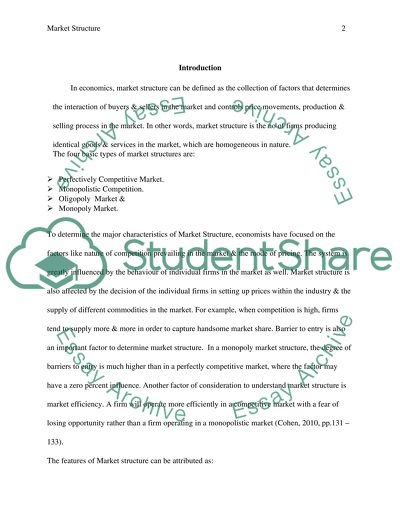Cite this document
(“Market structure Essay Example | Topics and Well Written Essays - 2250 words”, n.d.)
Market structure Essay Example | Topics and Well Written Essays - 2250 words. Retrieved from https://studentshare.org/macro-microeconomics/1664924-market-structure
Market structure Essay Example | Topics and Well Written Essays - 2250 words. Retrieved from https://studentshare.org/macro-microeconomics/1664924-market-structure
(Market Structure Essay Example | Topics and Well Written Essays - 2250 Words)
Market Structure Essay Example | Topics and Well Written Essays - 2250 Words. https://studentshare.org/macro-microeconomics/1664924-market-structure.
Market Structure Essay Example | Topics and Well Written Essays - 2250 Words. https://studentshare.org/macro-microeconomics/1664924-market-structure.
“Market Structure Essay Example | Topics and Well Written Essays - 2250 Words”, n.d. https://studentshare.org/macro-microeconomics/1664924-market-structure.


